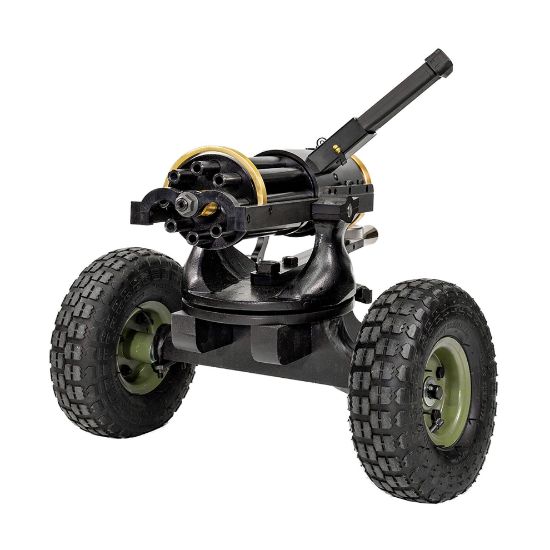shanneba
Professional
November 4, 1862
Indianapolis resident Richard Jordan Gatling received his first patent for the Gatling Machine Gun.
According to sources, he designed the gun with hopes that it would "minimize the number of men needed to fight a war, and thus minimize the number of men exposed to its horrors."
Though not without problems, it was far more reliable than its predecessors, faster to load and could fire sustained bursts with less overheating.
The first model had six barrels, which rotated round a central axis. The ammunition was held in a drum on top of the machine, which automatically loaded each barrel, fired a round and ejected the cartridge case.
Each barrel fired once in a full rotation. In a test in 1870 a Gatling fired 1,925 rounds in two and a half minutes.
However, the Gatling gun, along with other machine guns, caused massive death tolls in the wars to come.

 www.britannica.com
www.britannica.com
Indianapolis resident Richard Jordan Gatling received his first patent for the Gatling Machine Gun.
According to sources, he designed the gun with hopes that it would "minimize the number of men needed to fight a war, and thus minimize the number of men exposed to its horrors."
Though not without problems, it was far more reliable than its predecessors, faster to load and could fire sustained bursts with less overheating.
The first model had six barrels, which rotated round a central axis. The ammunition was held in a drum on top of the machine, which automatically loaded each barrel, fired a round and ejected the cartridge case.
Each barrel fired once in a full rotation. In a test in 1870 a Gatling fired 1,925 rounds in two and a half minutes.
However, the Gatling gun, along with other machine guns, caused massive death tolls in the wars to come.
Richard Jordan Gatling | Civil War, Machine Gun, Inventor | Britannica
Richard Jordan Gatling was an American inventor best known for his invention of the Gatling gun, a crank-operated, multibarrel machine gun, which he patented in 1862. Gatling’s career as an inventor began when he assisted his father in the construction and perfecting of machines for sowing cotton



